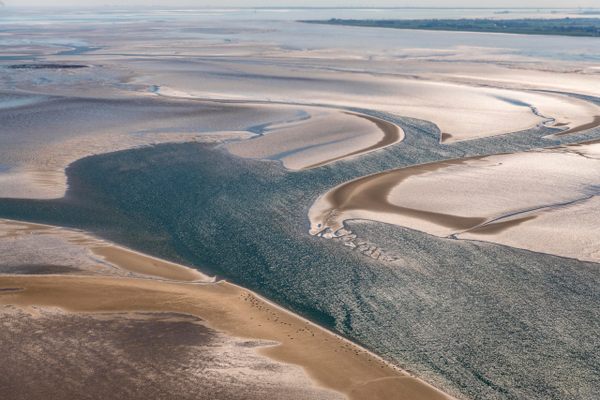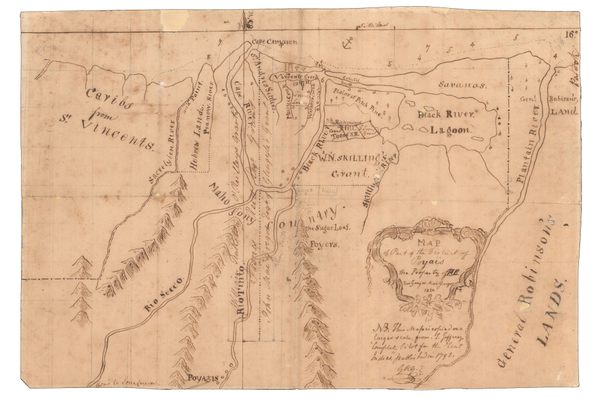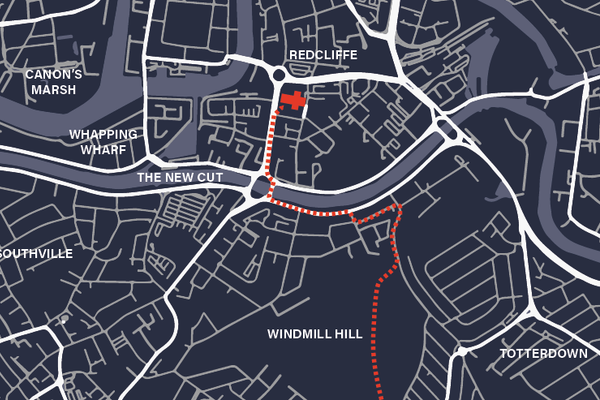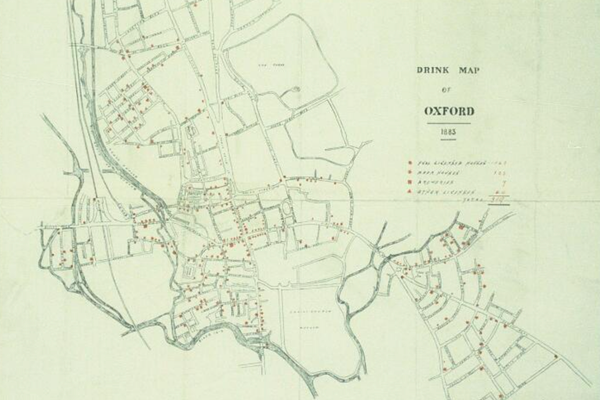Null Island Is One of the Most Visited Places on Earth. Too Bad It Doesn’t Exist
The ocean spot is the center of the world’s geocoded map mistakes.
It doesn’t seem like much of a place to visit. Granted, I’ve never actually been there, but I think I can imagine it: the vastness of ocean, overcast skies, a heavy humidity in the air. No land in sight, with the only distinguishing feature being a lonely buoy, bobbing up and down in the water. It almost seems like a “non-place,” but it may surprise you to learn that this site is far from anonymous. This spot is a hive of activity in the world of geographic information systems (GIS).
As far as digital geospatial data is concerned, it may be one of the most visited places on Earth! This is Null Island.

Artistic fantasy map of Null Island. Graphic by Ian Cairns on GitHub 2013.
Null Island is an imaginary island located at 0°N 0°E (hence “Null”) in the South Atlantic Ocean. This point is where the equator meets the prime meridian. The exact origins of “Null Island” are a bit murky, but it did reach a wide audience no later than in 2011 when it was drawn into Natural Earth, a public domain map dataset developed by volunteer cartographers and GIS analysts. In creating a one-square meter plot of land at 0°N 0°E in the digital dataset, Null Island was intended to help analysts flag errors in a process known as “geocoding.”
Geocoding is a function performed in a GIS that involves taking data containing addresses and converting them into geographic coordinates, which can then be easily mapped. For example, a data table of buildings in Washington, DC could include the Madison Building of the Library of Congress (where I’m reporting from) as a feature and include its address: 101 Independence Avenue SE, Washington, DC, 20540. This address typically makes sense to the layperson, but to put the address on a map using a GIS, the computer needs a translation. A “geocoder” converts this address into its location as set of coordinates in latitude and longitude, a format that a GIS understands. In this case, the Madison Building’s geographic location becomes 38° 53′ 12″N, 77° 0′ 18″W (38.886667, -77.005 in decimal degree format). Anyone who has ever typed in an address on Google Maps or looked up driving directions on Mapquest has been a beneficiary of this tool: type in an address, get a pin on a map.
Unfortunately, due to human typos, messy data, or even glitches in the geocoder itself, the geocoding process doesn’t always run so smoothly. Misspelled street names, non-existent building numbers, and other quirks can create invalid addresses that can confuse a geocoder so that the output becomes “0,0”. While this output indicates that an error occurred, since “0,0” is in fact a location on the Earth’s surface according to the coordinate system, the feature will be mapped there, as nonsensical as the location may be. We end up with an island of misfit data.
The zero latitude, zero longitude location of “Null Island”-fame is based on the World Geodetic System 1984 (WGS84), a commonly-used global reference system for modeling the Earth that is the standard for the Department of Defense and the Global Positioning System (GPS). Technically, if you were geocoding in another coordinate system or map projection (which are essentially different frameworks for adapting the Earth onto a sphere, ellipsoid, plane, or other shape for measurement and mapping), the position of “0,0” could be in one of thousands of locations around the world (A fun mapping experiment by Kenneth Field, Craig Williams, and David Burrows goes further down this rabbit hole). But for most standard geocoding, chances are, if you’ve ever geocoded less-than-perfect data and didn’t check your results, some of your data points have probably visited this one peculiar spot in the Gulf of Guinea.
Sending geospatial data points off to Null Island, so to speak, is a recognizable sight among GIS professionals the world over. As a cartographer in the Geography and Map Division with quite a bit of geocoding experience under my belt, this phenomenon is certainly familiar to me. This shared experience among geographers has fed the mystique of Null Island, with GIS enthusiasts creating fantasy maps, a “national” flag, and articles detailing Null Island’s rich (and fake) history online. The mystique, of course, is all just in good fun, although plenty of maps in the Geography and Map Division are just that: fantasy maps originating from one’s own imagination and communicating interesting perspectives on art, culture, and technology.
That said, you may still be thinking that the significance of the location of Null Island is little more than a geographer’s inside joke. But remember that lone buoy? That’s Station 13010 (also known as “Soul”), a NOAA weather observation buoy. Permanently anchored at 0°N 0°E, Soul collects data on air temperature, water temperature, wind speed, wind direction and other variables as part of the Prediction and Research Moored Array in the Atlantic (PIRATA) program. Observations collected by Soul and other buoys in the PIRATA network support research into climatic conditions and weather forecasting in the Tropical Atlantic and beyond.

An ATLAS buoy from the PIRATA program, similar to the one at the “Null Island” site. Photo by National Data Buoy Center, National Oceanic and Atmospheric Administration.
Null Island is a curious blend of real and imaginary geography, of mathematical certainty and pure fantasy. Or it’s just the site of a weather observation buoy. However you see it, we have the GIS world to thank for putting Null Island on the map…in its own, strange way.
This article was originally published in Worlds Revealed, the official blog of the Geography and Map Division of the Library of Congress, as “The Geographical Oddity of Null Island.”










Follow us on Twitter to get the latest on the world's hidden wonders.
Like us on Facebook to get the latest on the world's hidden wonders.
Follow us on Twitter Like us on Facebook